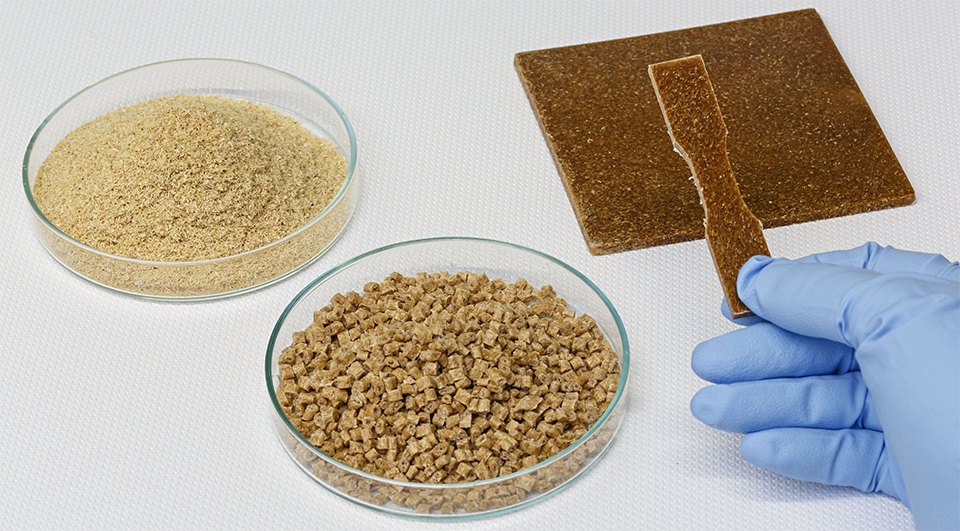Possibilities and perspectives of natural fiber-reinforced composites


The use of sustainable materials and substances is not only a decision with high ecological and social relevance, but also a strategic step.
With this in mind, one goal is to replace classically injection moulded, reinforced materials (e.g. short glass fiber-reinforced polymers (GFRPs)) with natural fiber-reinforced polymers (NFRPs). However, a direct one-to-one substitution is not possible in many applications.
Natural fiber-reinforced thermoplastics may differ from short glass fiber-reinforced plastics considerably. The mechanical properties are at a lower level and, as a result of the natural origin of the natural fibers, have a higher degree of fluctuation. Natural fibers have a higher thermal sensitivity, which must be taken into account during processing, and tend to produce more odors and emissions at higher temperatures. Furthermore, natural fibers are sensitive to moisture absorption. Their behavior under long-term loading in highly stressed applications and possible changes in material behavior due to external influences are also not yet sufficiently known. The scientific and technical literature contains studies on these dependencies using different examples of natural fiber-reinforced plastics. Solutions and approaches for the targeted optimization of individual properties can also be found. However, many of the approaches are still at an early stage of development, which is why natural fiber-reinforced polymers are currently still rarely used in structural components.
Therefore, it is necessary to know and understand the challenges, limitations and potentials of natural fiber-reinforced plastics. From this, suitable strategies can be derived to enable application-specific and requirements-oriented use of this class of materials.
The goal of the industrial joint project NaFiTech is to delop a solid database for evaluating the possibilities and perspectives of natural fiber-reinforced composites.
The joint project includes the following work items: